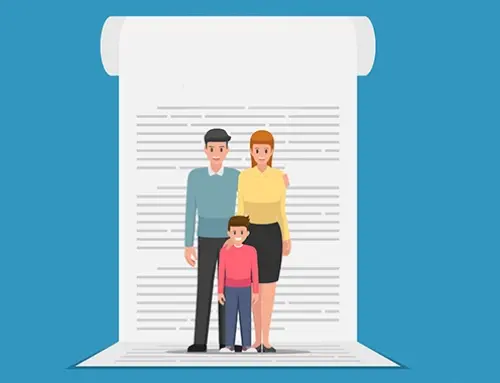Contents
In the United States, the minimum age to legally move out without parental consent is typically 18. This is because 18 is the age of majority in most states, signifying that an individual is considered an adult for most legal purposes, including the right to decide where to live.
What Age Can You Legally Move Out Your Parents Home?
This guide will address the question, “When can you move out of your parents’ house?”. The legal age to move out without parental consent is generally 18. This is because 18 is considered the age of majority in most states, meaning an individual is legally recognized as an adult and can make decisions independently, including the decision to move out of their parents’ home. However, there are exceptions depending on the state or specific circumstances, such as emancipation or marriage before reaching the age of 18, which can legally allow an individual to move out earlier. Emancipation is a legal process that grants minors many of the rights and responsibilities of adulthood, including the ability to live independently from their parents. The requirements for emancipation vary by state.
Can You Legally Move Out At 18 If You’re Still in School?
Yes, in the United States, you can legally move out at 18 even if you are still in school. Turning 18 typically grants you the status of an adult in the eyes of the law, which means you gain the legal right to make decisions about your living arrangements among other things, regardless of your educational status. This holds true whether you are in high school, college, or any other form of educational institution.
Being 18 means you are considered capable of entering into contracts, such as leases for housing, and you are responsible for your own decisions, including those related to your education and residence. However, it’s important to consider the practical aspects of moving out, including financial stability, how it might impact your education, and your readiness to take on the responsibilities of living independently.
Reasons to Runaway
The term “runaway” is most commonly used to refer to a minor who has left home without permission and stays away either temporarily or indefinitely. People run away from home for various reasons, and these can be complex and deeply personal.
Family Conflict: This is one of the most common reasons. Continuous arguments, feeling misunderstood, or experiencing a breakdown in communication with family members can lead someone to leave.
Abuse or Neglect: Experiencing physical, emotional, sexual abuse, or neglect at home can lead individuals to seek escape through running away. They may feel unsafe or uncared for in their home environment.
Mental Health Issues: Individuals suffering from mental health issues, such as depression, anxiety, or trauma, might run away to escape their feelings or situations they find overwhelming.
Substance Abuse: Substance abuse problems within the family or the individual’s own struggles with substance use can be a significant factor in the decision to run away.
Peer Pressure: Influence from friends or acquaintances, especially those who have run away or are living independently, can encourage someone to leave home.
Seeking Independence: Some young people run away because they crave independence or wish to escape perceived restrictions or control at home.
Romantic Relationships: Young people might leave home to be with a romantic partner, especially if they feel their relationship is not accepted or understood by their families.
Financial Problems: Economic hardship, poverty, or the desire to escape financial problems at home can drive individuals to seek a different situation.
LGBTQ+ Identity Issues: LGBTQ+ youth may run away from home due to rejection, lack of acceptance, or abuse related to their sexual orientation or gender identity.
Bullying: Being bullied at school or in their community, especially if they feel unsupported at home, can lead some to run away.
It is important for anyone thinking of running away to consider seeking help from trusted adults, friends, or professional services. There are organizations and hotlines dedicated to assisting individuals in crisis, offering support, advice, and sometimes mediation with families.
Runaway Standards
Various agencies and organizations may have specific standards to determine what constitutes a runaway situation. However, generally, the following key elements help define a runaway scenario:
- Age: The individual is typically under the age of 18, which is considered the age of majority in most jurisdictions in the United States. This age can vary internationally.
- Leaving Voluntarily: The individual leaves home or a place of residence willingly, not because of an external force or abduction. This distinguishes runaways from missing children or those who are kidnapped.
- Lack of Parental Permission: The departure from home is without the consent or knowledge of the parent(s) or guardian(s). If a parent is aware of and consents to the child’s departure, it may not be considered a runaway situation but rather an alternative living arrangement.
- Intention to Stay Away: There is an intention, whether temporary or permanent, to stay away from home. This can include staying with friends, and relatives, in shelters, or unknown circumstances.
- Avoidance of Detection: Often, runaways will attempt to avoid being found or returned to their home environment. They might avoid usual hangouts, social media, or any place they believe they could be easily located.
- Underlying Issues: While not a criterion per se, many runaways are escaping from problems at home such as abuse, neglect, family conflict, or personal issues like mental health struggles or identity crises.
Considerations
- Reporting: Parents or guardians typically report runaways to the police or child protection services. In many places, law enforcement agencies have protocols for dealing with runaways, focusing on the safety and well-being of the child.
- Legal Implications: The act of running away is not considered a crime in many jurisdictions. However, there may be legal consequences for actions taken while away from home, such as truancy from school or engaging in illegal activities.
- Help and Resources: There are numerous resources and organizations dedicated to helping runaways and their families. These organizations often provide crisis intervention, mediation services, shelter, and support to address the underlying issues leading to the runaway situation.
It is crucial for communities and families to understand the reasons behind runaway behavior and to approach these situations with empathy and support, aiming for resolutions that prioritize the well-being and safety of the young person involved.
Is Running Away Legal?
The legality of running away varies by jurisdiction, but in many places, especially in the United States, running away from home is not considered a criminal act for the minor who runs away. In some jurisdictions, running away is classified as a status offense. A status offense is an action that is considered a legal violation only because of the age of the doer, such as truancy or violating curfew. While not a crime in the criminal sense, these actions can lead to intervention by juvenile courts or child welfare agencies.
Although running away is not a crime, it can lead to police involvement. Parents or guardians typically report a runaway child to the police to help locate and return the child home safely. The primary concern of law enforcement in these cases is the safety and well-being of the minor. Depending on the circumstances, runaways may come into contact with the juvenile justice system, especially if they are found in situations that violate other laws (e.g., curfew violations, engaging in illegal activities while away from home). The aim is usually to address the underlying issues that led to running away rather than to punish the behavior itself.
Adults who knowingly shelter runaway minors without permission from the parents or legal guardians can face legal consequences. Laws vary by state, but harboring a runaway is illegal in many jurisdictions and can result in criminal charges. Beyond legal implications, running away from home can expose minors to significant risks, including homelessness, exploitation, and involvement in criminal activities as both victims and perpetrators. Many regions have systems in place to help manage and resolve situations involving runaways, focusing on the root causes and aiming to reunite families when safe and appropriate. This often involves social services, counseling, and other support mechanisms.
What If the Teenager Is Subject to Abuse?
If a teenager is being abused, it is critical that they get help as soon as possible. Abuse can take many forms, including physical, emotional, sexual, or neglect, and no one deserves to experience it.
Steps and Resources Available for Teenagers Facing Abuse
Immediate Safety
- Find a Safe Place: If in immediate danger, the priority is to get to a safe location. This could be a friend’s house, a relative’s home, a police station, or a community center.
Reporting the Abuse
- Contact Authorities: Reporting the abuse to authorities, such as the police or child protective services (CPS), is a crucial step. These organizations can take legal action to protect the teenager from further harm.
- School Resources: School counselors, nurses, or teachers can also be resources. They are typically required by law to report suspected abuse to the appropriate authorities.
Seeking Support
- Hotlines and Helplines: Various national and local hotlines are available to provide confidential support and advice. In the U.S., one such resource is the National Child Abuse Hotline, reachable at 1-800-4-A-CHILD (1-800-422-4453). For those facing sexual abuse, RAINN (Rape, Abuse & Incest National Network) offers support through the National Sexual Assault Hotline at 1-800-656-HOPE (1-800-656-4673).
- Counseling and Therapy: Mental health professionals can offer support and coping strategies to deal with the trauma of abuse.
Legal Protection
- Restraining Orders: In cases of severe abuse, it might be possible to obtain a restraining order against the abuser, legally preventing them from coming near or contacting the victim.
- Emancipation: In some cases, teenagers may consider emancipation—a legal process that grants them adult status and independence from their parents or guardians. The requirements for emancipation vary by state.
Long-term Safety and Well-being
- Support Networks: Building a support network of friends, family members, teachers, and professionals can provide emotional support and practical assistance.
- Educational and Career Planning: Focusing on education and career goals can offer a sense of direction and a path to independence.
Reasonable Motives
If a teenager is experiencing abuse, running away might seem like a viable option to escape their situation. However, it is critical to address the underlying issue of abuse directly and seek help from safe and supportive channels. The primary concern for any teenager facing abuse is ensuring their immediate safety. Contacting authorities, a trusted adult, or a support organization can initiate steps to remove the teenager from the harmful environment and provide them with protection.
Teenagers have legal rights to protection from abuse, whether physical, emotional, or sexual. Law enforcement and child protective services can take legal action to prevent further abuse, including removing the teenager from the abusive situation and taking legal action against the abusers. By reaching out for help, abused teenagers can access a range of resources designed to support them through their situation. This includes counseling, safe shelters, legal assistance, and medical care if needed.
While running away might offer a temporary escape from abuse, it often exposes the teenager to new risks and does not solve the underlying problem. Seeking help can lead to more sustainable solutions, such as legal intervention against the abuser, placement in a safe environment, and access to support services to aid in recovery and building a safer future. Reporting abuse and seeking help not only aids the victim but can also prevent the abuser from harming others. It is an essential step in breaking the cycle of abuse and holding the abuser accountable for their actions.
Alternative Legal Methods for Teens to Leave Home in the US
For teenagers in the United States seeking to leave their homes legally for reasons other than simply running away, there are several avenues to explore, each with its own legal requirements and implications. These options can provide a way for teenagers to find a safer or more supportive environment, often with the help of the legal system or through specific arrangements. Here are some of the most common legal ways for teens to leave home:
-
Emancipation
Emancipation is a legal process that grants a minor some or all of the rights and responsibilities of adulthood before they reach the age of majority (usually 18 in most states). The process and requirements for emancipation vary by state but generally include proving financial independence, demonstrating the ability to live independently, and sometimes a court hearing. Emancipated minors can make certain legal decisions for themselves, such as signing leases, enrolling in school, and making healthcare decisions.
-
Legal Guardianship Changes
This involves transferring legal guardianship from the teenager’s parents to another adult, often a family member or close friend, who is better suited to provide for the teen’s needs. The process typically requires consent from the current legal guardians (usually the parents), the new guardians, and sometimes the approval of a court. This can provide a more stable or supportive home environment for the teenager without severing legal ties or responsibilities as emancipation does.
-
Seeking Help from Child Protective Services (CPS)
In situations involving abuse, neglect, or unsafe living conditions, a teenager or a concerned individual can report these conditions to CPS. A report is made, and CPS investigates the situation. If they find the claims to be valid, they can take various actions, including removing the teen from the home. The primary goal is to ensure the safety and well-being of the teenager, which may involve placement in a foster home or with a relative, and access to supportive services.
-
Becoming a Part of the Foster Care System
In some cases, teenagers can become part of the foster care system, either through intervention by CPS or by other legal means. This usually follows an investigation by child welfare authorities that deems the current living situation unsafe or unsuitable for the teenager. Foster care aims to provide a safe, supportive temporary living situation while working towards a permanent solution, which could include reunification with family, adoption, or aging out with support services.
-
Joining a Job Corps or Similar Program
Job Corps is a free education and vocational training program run by the U.S. Department of Labor for young people looking to earn a high school diploma or GED and receive job training. Participants must be between 16 and 24 years old and meet certain income requirements. Living on-site at a Job Corps center is optional for some programs, allowing teens an alternative living situation. It provides education, training, and housing, offering a way for teens to gain independence in a structured environment.
Tips for Successfully Moving Out of Your Parents’ Home in the US
Moving out of your parents’ home is a significant step towards independence and adulthood. Planning and preparation are key to ensuring a smooth transition. Here is some guidance for a successful move:
Financial Stability
- Save Money: Before moving out, save enough money to cover at least three to six months of living expenses, including rent, utilities, food, transportation, and unforeseen expenses.
- Budget: Create a detailed budget that accounts for all your income and expenses. Be realistic about what you can afford in terms of housing, food, and other necessities.
- Understand Expenses: Familiarize yourself with all potential expenses, including renter’s insurance, utilities, internet, and emergency funds.
Secure a Steady Income
- Ensure you have a reliable source of income that covers your expenses. Consider the stability and longevity of your job or income source.
Find Suitable Housing
- Research: Look into different neighborhoods and consider factors like safety, proximity to work or school, and availability of public transportation.
- Understand the Lease: Before signing a lease, read it thoroughly. Understand your rights and responsibilities as a tenant, including the terms of the lease, the deposit required, and the policy on breaking the lease.
Plan for Moving Logistics
- Packing Supplies: Gather boxes, tape, and other packing supplies well in advance.
- Moving Help: Decide whether you’ll need professional movers or if you can manage with the help of friends or family. Book these services in advance if necessary.
- Change of Address: Remember to change your address with the post office, banks, and other important institutions.
Build Essential Skills
- Cooking: Learn basic cooking skills to prepare affordable and healthy meals.
- Cleaning and Maintenance: Know how to perform basic cleaning and maintenance tasks to keep your living space in good condition.
- Time Management: Develop good habits around time management to balance work, social life, and personal care.
Emergency Preparedness
- Emergency Fund: Have a separate savings account for emergencies.
- Support Network: Build a support network in your new area, including knowing whom to call in an emergency and having contacts for local services.
Legal and Administrative Tasks
- Understand tenant rights and responsibilities in your state.
- Ensure you have all necessary documents in order, such as identification, social security card, and bank information.
Mental and Emotional Preparation
- Moving out can be emotionally challenging. Prepare yourself for feelings of homesickness and understand that it’s normal. Stay connected with family and friends for support.
Continuous Learning and Adaptation
- Be open to learning from your experiences and willing to adapt. Managing your own space and finances is a learning process.
Moving out requires careful planning, but it can also be an exciting step towards independence. By following these steps and preparing adequately, you can make the transition smoother and more successful.
Conclusion
In conclusion, navigating the journey from living under your parents’ roof to establishing your own independence is a multifaceted process that encompasses legal, emotional, and practical considerations. Whether you are moving out at 18, seeking emancipation, or exploring other legal avenues for leaving home due to challenging circumstances, it is crucial to approach this significant life change with thorough planning and awareness of the resources available to you. Remember, the aim is not just to move out, but to move forward into a phase of life where you are prepared to handle the responsibilities and enjoy the freedoms of adulthood.
Disclaimer: The content provided on this blog is for informational purposes only and does not constitute legal, financial, or professional advice.






